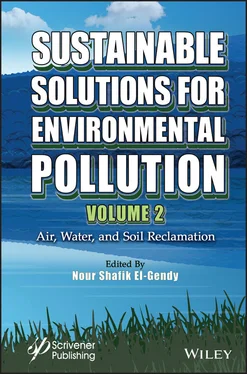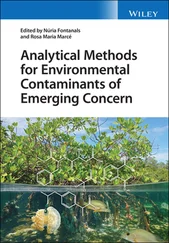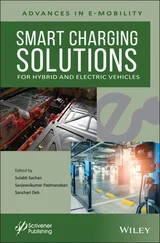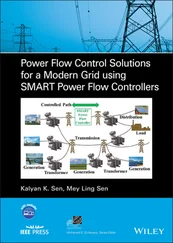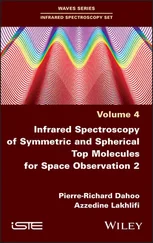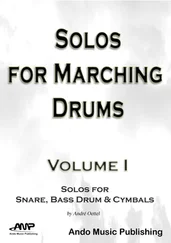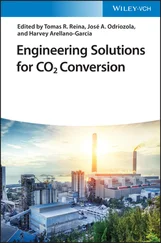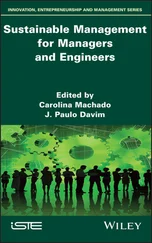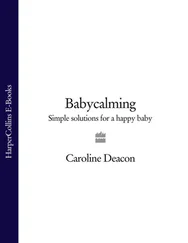Sustainable Solutions for Environmental Pollution, Volume 2
Здесь есть возможность читать онлайн «Sustainable Solutions for Environmental Pollution, Volume 2» — ознакомительный отрывок электронной книги совершенно бесплатно, а после прочтения отрывка купить полную версию. В некоторых случаях можно слушать аудио, скачать через торрент в формате fb2 и присутствует краткое содержание. Жанр: unrecognised, на английском языке. Описание произведения, (предисловие) а так же отзывы посетителей доступны на портале библиотеки ЛибКат.
- Название:Sustainable Solutions for Environmental Pollution, Volume 2
- Автор:
- Жанр:
- Год:неизвестен
- ISBN:нет данных
- Рейтинг книги:3 / 5. Голосов: 1
-
Избранное:Добавить в избранное
- Отзывы:
-
Ваша оценка:
- 60
- 1
- 2
- 3
- 4
- 5
Sustainable Solutions for Environmental Pollution, Volume 2: краткое содержание, описание и аннотация
Предлагаем к чтению аннотацию, описание, краткое содержание или предисловие (зависит от того, что написал сам автор книги «Sustainable Solutions for Environmental Pollution, Volume 2»). Если вы не нашли необходимую информацию о книге — напишите в комментариях, мы постараемся отыскать её.
This second volume in a broad, comprehensive two-volume set, “Sustainable Solutions for Environmental Pollution”, concentrates on air, water, and soil reclamation, some of the biggest challenges facing environmental engineers and scientists today.
AUDIENCE: Sustainable Solutions for Environmental Pollution,
Sustainable Solutions for Environmental Pollution, Volume 2 — читать онлайн ознакомительный отрывок
Ниже представлен текст книги, разбитый по страницам. Система сохранения места последней прочитанной страницы, позволяет с удобством читать онлайн бесплатно книгу «Sustainable Solutions for Environmental Pollution, Volume 2», без необходимости каждый раз заново искать на чём Вы остановились. Поставьте закладку, и сможете в любой момент перейти на страницу, на которой закончили чтение.
Интервал:
Закладка:
Natural wetlands have been used for a long time for disposal of waste-water, without really considering the negative effect that pollution can have on these aquatic ecosystems. CWs aim to reproduce (and intensify) the processes observed in natural wetlands, swamps, or marshes. They can be classified according to: 1) hydrology (surface flow versus subsurface flow); 2) macrophyte types (emergent, free-floating, or submerged plants); and 3) flow path (horizontal or vertical). The major flow types are as follows:
– Free Surface Flow CWs (FSF-CWs), as shown in Figure 1.4a, are ponds with emergent macrophytes. A free-water CW reproduce natural processes of a natural wetland, where water flows slowly through the wetland, promoting the deposition of particles, the removal of pathogens and the degradation and uptake of OM and nutrients by microbes and macrophytes;
– Floating macrophyte mats on CW surface, or Floating Treatment CWs (FT-CWs), as shown in Figure 1.4b, use natural water macrophytes on buoyant mats drifting on the surface of the water. The floating macrophyte mat promotes the hydraulic flow of water below and through the macrophytes, with a free root system that grows deeper into the water column and function as a natural filter;
– In subsurface flow CWs (SSF-CWs), there is no superficial water, and the water level is kept below in the filter material, as shown in Figure 1.4(c and d): their advantages and limits are presented in Table 1.1.

Figure 1.4 (a) Simplified scheme of a Free Surface Flow CW (SFS-CW); (b) Schematic representation of a floating macrophytes surface flow CW (FT-CW); (c) Principles of Horizontal subsurface flow CW (HSSF-CW); and (d) Principles of Vertical subsurface flow CW (VSSF-CW).
Table 1.1 Advantages and disadvantages of vertical and horizontal subsurface flow of CWs in water treatment (Luederitz et al. , 2001).
| Wetland type | Advantages | Disadvantages |
| Vertical Flow VSSF-CW | Lower area demand | Short flow distance |
| Good oxygen supply, good nitrification | Poor denitrification | |
| Simple hydraulics | Higher technical demands | |
| High purification capacity from the start | Loss of performance with phosphorous removal | |
| Horizontal Flow HSSF-CW | Long flowing distances, nutrient gradients can be established | High area demand |
| Nitrification and denitrification possible | Careful calculation of hydraulics required for optimal oxygen supply | |
| Longer life cycle | Equal wastewater supply is complicated |
– Horizontal Subsurface Flow CWs (HSSF-CWs), where the effluent moves horizontally inside the filter material, parallel to the surface between the macrophyte roots ( Figure 1.4c);
– Vertical Subsurface Flow CWs (VSSF-CWs), where the effluent moves vertically from the planted surface layer down through the substrate and drains down toward a lower drain, as for HSSF-CW ( Figure 1.4d).
Because of a more developed root adsorption surfaces, SSF-CWs have a greater rhizospheric effect than FSF-CWs. The rhizosphere is an important interface of sediment-plant microbial interactions, allowing spatial and temporal variations in redox conditions, thus offering a wide spectrum of microbial activities and thus potential pollutant degradation pathways.
SSF-CWs have been found to be more suitable than SFS-CWs in the cases where odorous water or wastewater with high solid content is being treated (Reed and Clearinghouse, 1993). In AMD treatments, anaerobic SSF-CWs are effective when the acidity of a water sample is greater than pH 4. Water is neutralized by the microbial usage of Fe 3+as the terminal electron acceptor. Aerobic settling ponds may be required for metal precipitation. Aerobic wetlands (surface flow) are usually used for metal precipitation and are used as a final step in integrated AMD treatment (Fripp et al. , 2000).
Hybrid CWs are the combination of various types of CWs in order to exploit the specific advantages of each type and thus provide aerobic and anaerobic conditions at the same time, conducive to the elimination of nitrogen pollution (Rizzo et al. , 2020).
There are two important aspects to consider in the design and operation of CWs: the water flow and the vegetation.
1.6.1 Water Flow
Water flow type and retention time strongly influence the physical-chemical parameters (e.g., redox potential and insolation) in CWs. In surface flow systems, sunlight can promote possible photo-degradation of pollutants due to direct exposure of water. FSF-CWs and SSF-CWs have generally a barrier to prevent seepage toward aquifers. In some FSF-CWs, infiltration might be a goal in some cases, such as protecting a bathing area downstream the discharge point. However, the latter strategy can be dangerous as infiltration means the transfer of pollutants to underground aquifers.
The water balance calculation in case of infiltration is tricky because it must also take into account possible evaporation and evapotranspiration. However, it is clear that soil sealing of large CWs is difficult and expensive. Nevertheless, a soil analysis should be conducted prior to CW building to evaluate the infiltration capacity (Bouzouidja et al. , 2020). This capacity may be spatially distributed and change overtime due to clogging (Lavrnić et al. , 2020a).
Hydraulic loading rate (HLR) is the rate of water flow into a wetland. Hydraulic retention time (HRT) is the measure of time that a soluble compound remains in the system during water treatment. A lower HLR and HRT of about 6 days are required for efficient pollutant removal in CWs. However, HLRs are difficult to categorize as low or high as values from 135 to 5,140 L/(m.d) were reported as high HLRs (Chang et al. , 2007). Length-to-width ratio of the wetland needs to be determined so that dimensions are worked out to accommodate inflow of water. One of the greatest causes of failure in CWs was found to be under sizing, thus resulting in inefficient water treatment. Dimensions need to be sufficient to handle water increase levels due to rainfall and adequate inlet and outlet systems to maintain water pre-rainfall levels. Water depth needs to be determined based on whether the type of CWs is FSF or SSF. The wetland depth for SSF-CW types is in the range 60 to 100 cm. In the case of surface flow wetlands, the mean depth is 30 cm (Wong and Geiger, 1997) and also depth of 2 m has been reported (Bois et al. , 2017). SSF-CWs are more commonly reported as compared to FSF-CWs in literature, though both have different advantages. As previously mentioned SSF-CWs are beneficial when dealing with odorous polluted water, while FSF-CWs can beneficiate from direct aeration, which can be promoted by wind.
There is no specific design for CWs. In 1993, there have been already approximately 80 types of SCW designs proposed since 1980 (Reed and Clearinghouse, 1993). A majority of European systems are based on rooted emergent macrophyte systems (Haberl et al. , 1995). CWs are designed to treat all kinds of urban and industrial wastewater and various runoffs (e.g., urban storm water and agriculture) and to polish already treated waste-water (Vymazal, 2009). Some CWs were even designed for phosphorus removal in natural waterbodies such as Lake Apopka in Florida (Dunne et al. , 2012), Everglades in Florida (Zhao and Piccone, 2020), and Albufera in Spain (Martín et al. , 2020). Understanding the phenomena taking place in natural wetlands helps to design properly these green (Zhang and Chui, 2019) or turquoise (Childers et al. , 2019) urban infrastructure elements that are CWs (Martín et al. , 2020). In terms of surface, CWs’ size ranges can differ largely. Zhao and Piccone (2020) report on a 6,600-ha FSF-CW in Florida to reduce phosphorus load from stormwater agricultural runoff and protect the Everglades Protection Area (Zhao and Piccone, 2020). On the other hand, Gaullier et al. (2020) discuss the efficiency of two small FSF-CWs (0.01 and 0.02 ha) built just downstream single agricultural plots (10 and 8 ha, respectively) (Gaullier et al. , 2020).
Читать дальшеИнтервал:
Закладка:
Похожие книги на «Sustainable Solutions for Environmental Pollution, Volume 2»
Представляем Вашему вниманию похожие книги на «Sustainable Solutions for Environmental Pollution, Volume 2» списком для выбора. Мы отобрали схожую по названию и смыслу литературу в надежде предоставить читателям больше вариантов отыскать новые, интересные, ещё непрочитанные произведения.
Обсуждение, отзывы о книге «Sustainable Solutions for Environmental Pollution, Volume 2» и просто собственные мнения читателей. Оставьте ваши комментарии, напишите, что Вы думаете о произведении, его смысле или главных героях. Укажите что конкретно понравилось, а что нет, и почему Вы так считаете.
